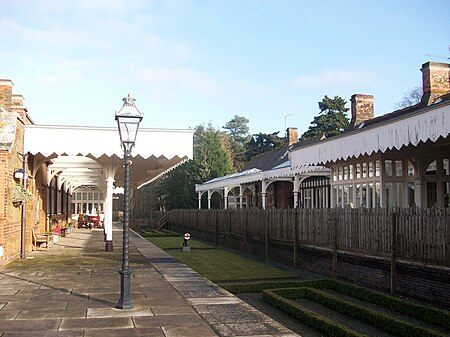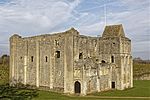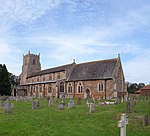Wolferton railway station
1862 establishments in England1969 disestablishments in EnglandDisused railway stations in NorfolkFormer Great Eastern Railway stationsGrade II* listed buildings in Norfolk ... and 7 more
Grade II* listed railway stationsPages with no open date in Infobox stationRailway stations in Great Britain closed in 1969Railway stations in Great Britain opened in 1862Sandringham, NorfolkUse British English from January 2017William Neville Ashbee railway stations

Wolferton was a railway station on the Lynn and Hunstanton Railway line which opened in 1862 to serve the village of Wolferton in Norfolk, England. The station was also well known as the nearest station to Sandringham House, and royal trains brought the royal family to and from their estate until the station's closure in 1969. After spending some time as a museum, the station is now preserved in private hands. The signal box and part of the station are listed buildings, Grade II*.
Excerpt from the Wikipedia article Wolferton railway station (License: CC BY-SA 3.0, Authors, Images).Wolferton railway station
Wolferton Road, King's Lynn and West Norfolk Sandringham
Geographical coordinates (GPS) Address Nearby Places Show on map
Geographical coordinates (GPS)
| Latitude | Longitude |
|---|---|
| N 52.8287 ° | E 0.4632 ° |
Address
The Royal Station
Wolferton Road
PE31 6HA King's Lynn and West Norfolk, Sandringham
England, United Kingdom
Open on Google Maps










